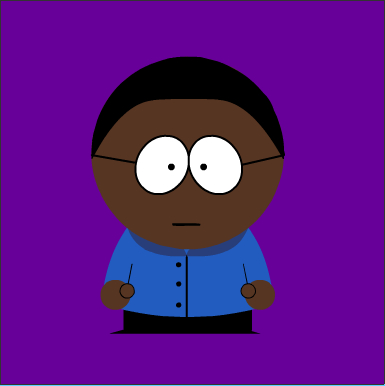The Reverse Crossover
Last week, Gwen Stefani appeared on 106 & Park to on BET to premiere her video "Hollaback Girl" as a New Joint, meaning that it was eligible to be voted onto the show. "Hollaback Girl" has been out as a single and video for weeks now. In fact, later that week, Stefani appeared on MTV's Total Request Live with the world premiere of her brand new video for "Cool." This is a very good example of what I will call (for lack of a better term) the reverse crossover.
When it comes to music "crossing over," it's widely assumed that it involves music from "niche" genres and artists becoming popular with the mainstream audience. This is what happened with a lot of black music. The music of Motown crossed racial boundaries and found fans across the board. The same thing happened with a lot of hip-hop music. Most recently, Latin music genres like reggaeton are finding audiences outside their what they normally draw.
In my mind, the reverse crossover is when a mainstream artist ends up crossing over to a niche audience. When "Hollaback Girl" first came out, the only place I heard the song was on the Top 40 stations in the area. The only place I saw the video was on the MTV channels and Fuse. However, I saw how it gradually became more and more popular with urban audiences. MTV played the video on its MTV Jams channel. I heard it once on the larger of the two urban stations in my area thinking that it was a one-time thing. Then, the other station started playing it. About a couple of weeks after the urban stations started playing the song, the video premiered on 106 & Park.
This isn't the first time the reverse crossover has happened. It happened when *NSYNC released the song "Gone." The larger urban station in my area was one of the first in the country to play it. It also happened with some of Justin Timberlake's songs. His ballad "Still On My Brain" was played on the urban stations in my area. An artist doesn't even need to be of a different race for this to happen. Most of Lenny Kravitz's music is not played on urban stations. However, they played "Storm (Remix)" which featured Jay-Z. The video even aired on BET. And when OutKast's "Hey Ya" was starting to lose steam for mainstream audiences, it got a second wind with urban ones. I remember vividly how the video suddenly appeared on 106 & Park more often than "The Way You Move."
The "reverse crossover" shows that the appreciation of music is a two-way street. My mom and dad know quite a lot of the "white" music of her era. My mom would always explain it away by telling my sister and I how she would listen to the white music station at night because the black one ended early. Now in the time of iPods and Jack FM, there is no shame in listening to whatever you like to listen to. In fact, I think reverse crossovers are going to become more and more common over the next few years. So common that the "reverse" in front of the term will disappear entirely.


Sterling,
ReplyDeleteInteresting comments on the trend...and you may be write that it will happen more and more often, particularly with all of the online music services (iTunes, Rhapsody, Yahoo!, etc)
Gwen actually started the reverse crossover a bit with "Rich Girl"...which eked its way onto the Billboard Hip Hop / R&B chart. That probably should have been big on urban stations as it's as much Dr. Dre as it is Gwen.